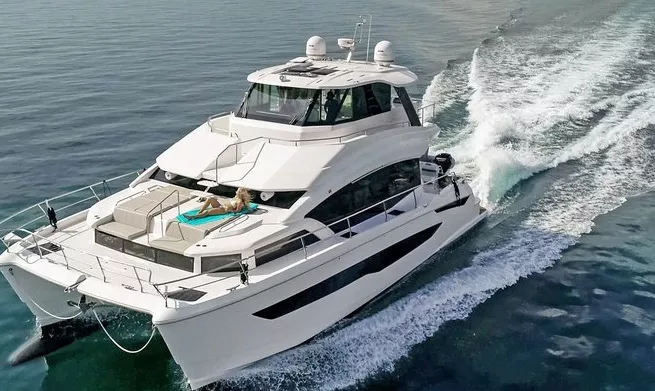When choosing a sailboat, understanding the safety features of catamarans and monohulls is essential. Both designs have unique characteristics that influence their performance and safety on the water. This article delves into the safety aspects of each, providing a clear comparison to aid in making an informed decision.
Sailboats come in two primary designs: catamarans and monohulls. Catamarans feature two parallel hulls, while monohulls have a single hull. Each design offers distinct advantages and challenges, especially concerning safety. By examining factors like stability, buoyancy, handling in rough seas, and self-righting capabilities, we can better understand which design might be safer under various conditions.
Which Is Safer Catamaran Or Monohull?
1. Stability and Capsizing Risk
Catamarans:
- Initial Stability: Catamarans are known for their high initial stability due to their wide beam and twin hulls. This design makes them less prone to heeling (tilting) and capsizing under normal conditions.
- Capsizing Behavior: While less likely to capsize, if a catamaran does overturn, it tends to remain upside down. This situation can pose significant risks, as the vessel may be difficult to right, and crew members could be exposed to the elements.
Monohulls:
- Heeling and Stability: Monohulls naturally heel over in strong winds, which can reduce the risk of capsizing by increasing the righting moment. The deeper draft and ballast keel provide stability, helping the boat return to an upright position after heeling.
- Self-Righting Capability: In the event of a capsize, monohulls are generally designed to self-right due to their ballast and hull shape. However, this process can be slow and may not always be successful, especially in severe conditions.
2. Performance in Rough Seas
Catamarans:
- Wave Dispersion: The twin-hull design allows catamarans to disperse wave energy more effectively, reducing the impact of waves and providing a smoother ride in choppy waters.
- Handling High Winds: Catamarans can handle high winds well, but their lighter weight and larger sail area can make them more susceptible to being overpowered. Proper reefing and sail management are crucial to maintain control.
Monohulls:
- Wave Interaction: Monohulls cut through waves due to their single-hull design, which can lead to a wetter ride but effective passage through rough seas.
- Heavy Weather Performance: The deeper draft and heavy keel of monohulls provide substantial ballast, aiding in stability during heavy weather. However, excessive heeling can be uncomfortable and may lead to crew fatigue.
3. Buoyancy and Unsinkability
Catamarans:
- High Buoyancy: The design of catamarans provides significant buoyancy, making them difficult to sink. Even if one hull is compromised, the vessel can remain afloat, offering a measure of safety.
- Unsinkability Features: Many modern catamarans are equipped with buoyancy chambers and sealed compartments, enhancing their unsinkable nature and ensuring they stay afloat even in adverse conditions.
Monohulls:
- Ballast and Stability: Monohulls rely on ballast, typically a heavy keel, to provide stability. While effective, this ballast can pose risks if the hull is breached, potentially leading to flooding and sinking.
- Flooding Risks: Damage to the hull can lead to water ingress. Without sufficient buoyancy, the vessel may be at risk of sinking, especially if the ballast becomes destabilized.
4. Crew Safety and Comfort
Catamarans:
- Space and Comfort: The wide beam provides ample deck and cabin space, enhancing crew comfort and reducing fatigue during long voyages.
- Safety Features: Many catamarans are equipped with safety features such as trampolines, lifelines, and easy access to the water, facilitating quick deployment of safety equipment if needed.
Monohulls:
- Confined Spaces: Monohulls often have narrower beams, resulting in more confined spaces below deck. This can lead to increased crew fatigue, especially on extended trips.
- Safety Equipment Access: Access to safety equipment may be less straightforward in monohulls, depending on the layout. However, their design often allows for secure stowage of life-saving gear.
Conclusion
Both catamarans and monohulls have unique safety attributes. Catamarans offer superior initial stability and buoyancy, making them less prone to heeling and capsizing, and difficult to sink. However, if they do capsize, they may remain inverted, posing challenges for recovery. Monohulls, with their self-righting capabilities and effective performance in heavy weather, provide a different set of safety features. The choice between the two should be based on the intended use, sailing conditions, and personal preferences regarding safety, performance, and comfort.

